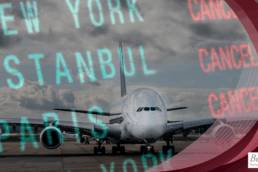The E-1 visa classification, often referred to as the Treaty Trader visa, is designed for individuals from “treaty countries,” such as Canada, and its primary purpose is to facilitate international trade by allowing business owners and/or their employees to work and live in the U.S. while engaged in substantial and principal trade with the U.S.
How do you qualify for an E-1 visa?
To qualify for E-1 status, the treaty trader must be coming to the U.S. to conduct trade between the States and the treaty country. In addition, the applicant must:
- Be a national of a country with which the U.S. maintains a treaty of commerce and navigation (e.g., Canada);
- Carry on substantial trade with the U.S.; and
- Carry on principal trade between the U.S. and the treaty country which qualified the treaty trader for E-1 classification.
How do you apply for an initial E-1 visa?
The process for obtaining an E-1 visa varies by country and typically involves several steps. For nationals of Canada, the applicant will need to upload Form DS-160, online nonimmigrant visa classification, along with their passport style photograph and pay an MRV fee. They will then submit a condensed version of their E-1 visa application to the U.S. Department of State, E Visa Unit (“the Service”) in Toronto via email: EVisaCanada@state.gov. The E-1 visa application itself generally encompasses a cover letter summarizing how the E-1 visa requirements have been met, Form DS-160 confirmation page, Form DS-156E, a table of contents, and supporting documentation.
Keep in mind that the Service will only accept submissions in PDF format as a single attachment, and the package must be no longer than 70 pages, not including Forms DS-160, DS-156E, G-28 (if represented by counsel), civil documents, copy of passport bio-page, tabs/dividers.
Once the condensed application has been submitted, current trends show that it typically takes 1-2 weeks for the Service to grant the applicant access to the calendar where they can then schedule their E-1 visa appointment. E-1 visa appointments are currently booked out for about 2-3 months, subject to change. The Service has a live booking system, so it is always a good idea to keep an eye out for any cancelations or additional openings.
On the day of the E-1 visa appointment, the applicant should take their Canadian passport and full E-1 visa application, including their appointment confirmation page, with them the Nonimmigrant E Visa Unit, located at 225 Simcoe Street, Toronto, Ontario, M5G 1S4. If they did not upload a passport style photo when they submitted their Form DS-160, they should take a physical passport-style photo with them as well.
Upon approval, the applicant will hand over their passport so the E-1 visa may be adjoined. Nationals of Canada are typically issued an E-1 visa for a five-year period. It typically takes about 3-10 business days for the passport to be returned to the applicant. The qualifying Canadian company will also be registered in the Canada E Visa Program and receive a company registration sheet.
Once the applicant receives their passport with the E-1 visa enclosed, they must first “activate” their E-1 visa by entering the U.S. and obtaining an I-94 record to reflect their terms of admission. It is therefore important that the applicant bring their new E-1 visa to the attention of the inspecting CBP officer upon entry to the U.S.The CBP officer will then admit the applicant in E-1 status for up to a two-year period upon each entry to the U.S. over the five-year E-1 visa validity period.
You may check your I-94 record after each entry to ensure that you were properly admitted into the states in E-1 status (https://i94.cbp.dhs.gov). Take care to note your limited two-year period of stay and be sure you plan your travels in/out of the U.S. so that you do not stay beyond the period authorized by your I-94 record.
If you are interested in obtaining an E-1 visa, feel free to contact our office to speak to one of our experienced attorneys: 716-634-1010.
Ready to have Berardi on your side?
Whether you’re a business looking to hire or a professional hoping to relocate, immigration law can be complicated. But you don’t have to do it alone. Put our experience to work for you.



